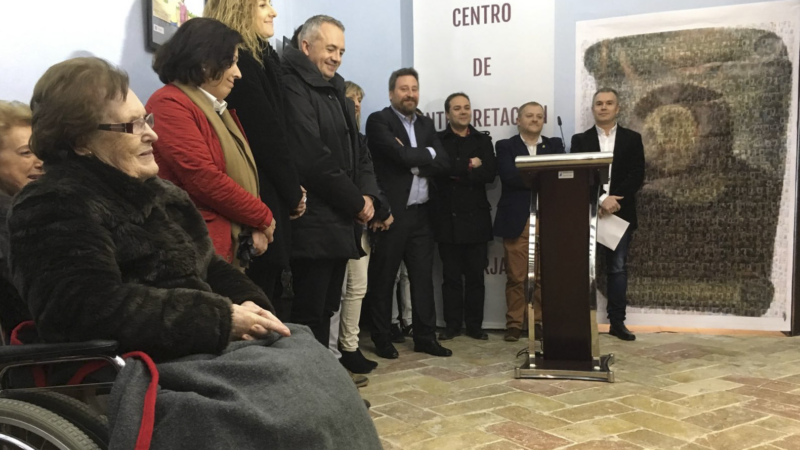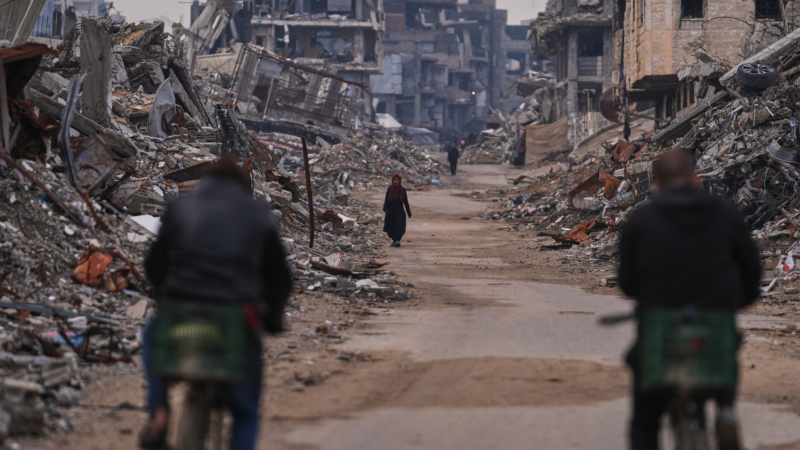Sea lions are released after toxic algae bloom in California
This spring, Southern California experienced one of the longest toxic algal blooms on record. It sickened at least 1,500 animals in the region and the Marine Mammal Care Center in San Pedro, Calif., took in nearly 400 sea lions and dolphins in just a few months.
On a recent Monday, NPR’s All Things Considered visited an empty beach in Palos Verdes to witness the release of one of the center’s very last sea lion patients from this year’s outbreak. Patchouli was waiting in a crate on the back of a truck and as her handlers carefully rolled her crate down a ramp, it bounced on its big moon-rover-like wheels. Then, it was go time — and as soon as they opened the crate’s door, Patchouli slid out onto the smooth rocks of the beach and waddled swiftly back into the waves.

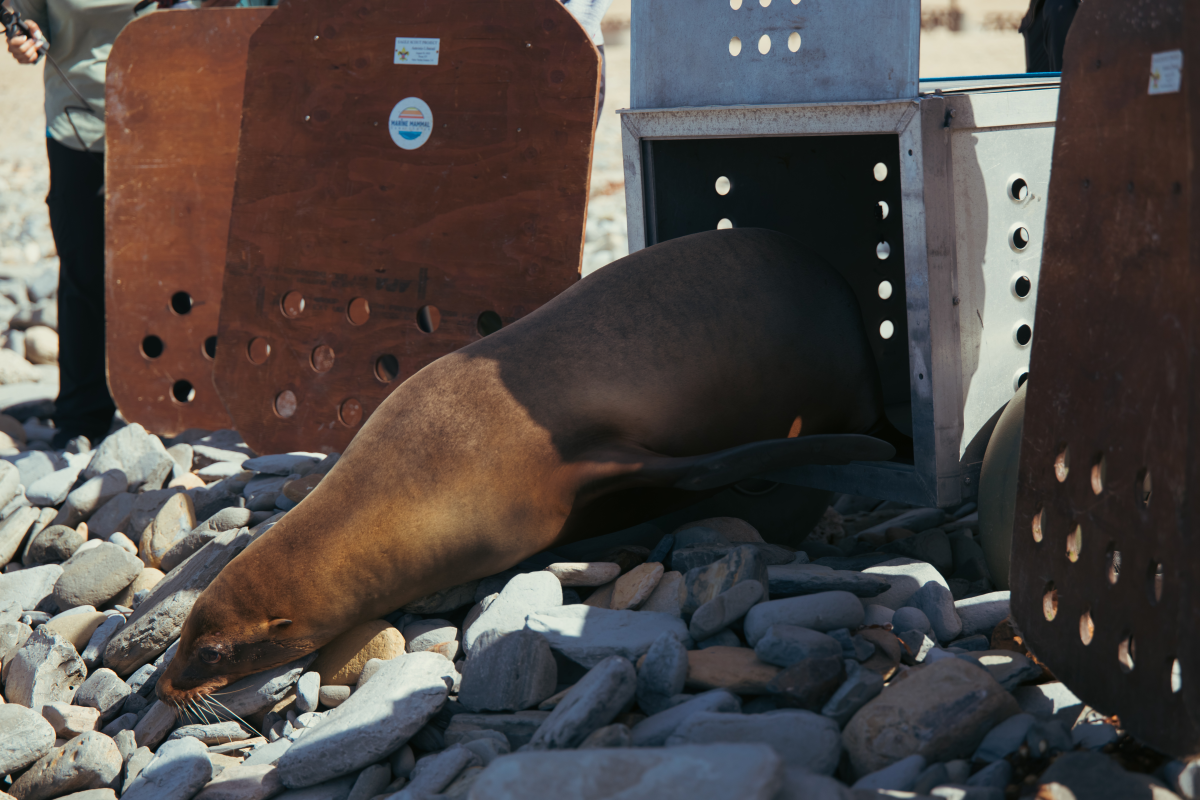
Meanwhile, back at the Marine Mammal Care Center, the scientific detective work is about to begin. Not all the animals sickened by this year’s algal bloom survived. In an effort to learn from their deaths, the center took all sorts of samples from the poisoned animals: brains, blubber, blood, even amniotic fluid.
Now, they will work with their scientific partners to determine how the toxin affected the animals, and in some cases, their gestating young. And they will investigate whether runoff from the January wildfires has affected the animals.
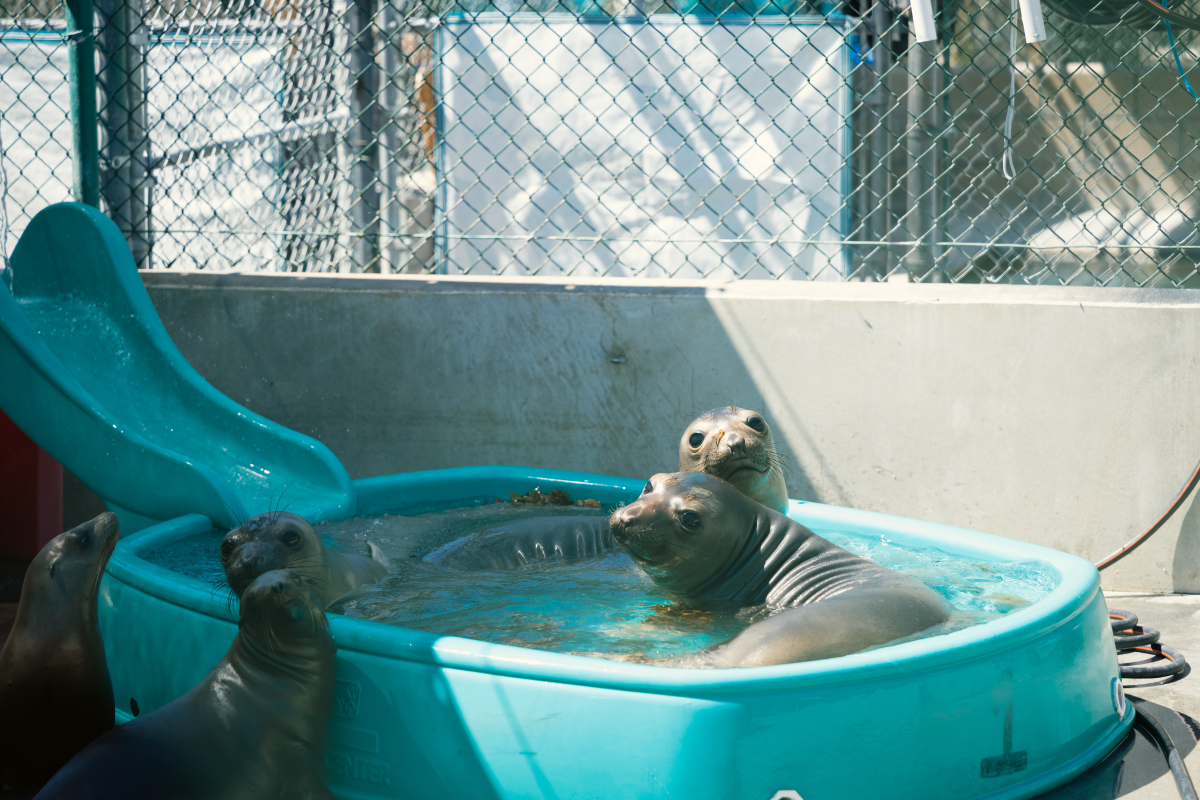
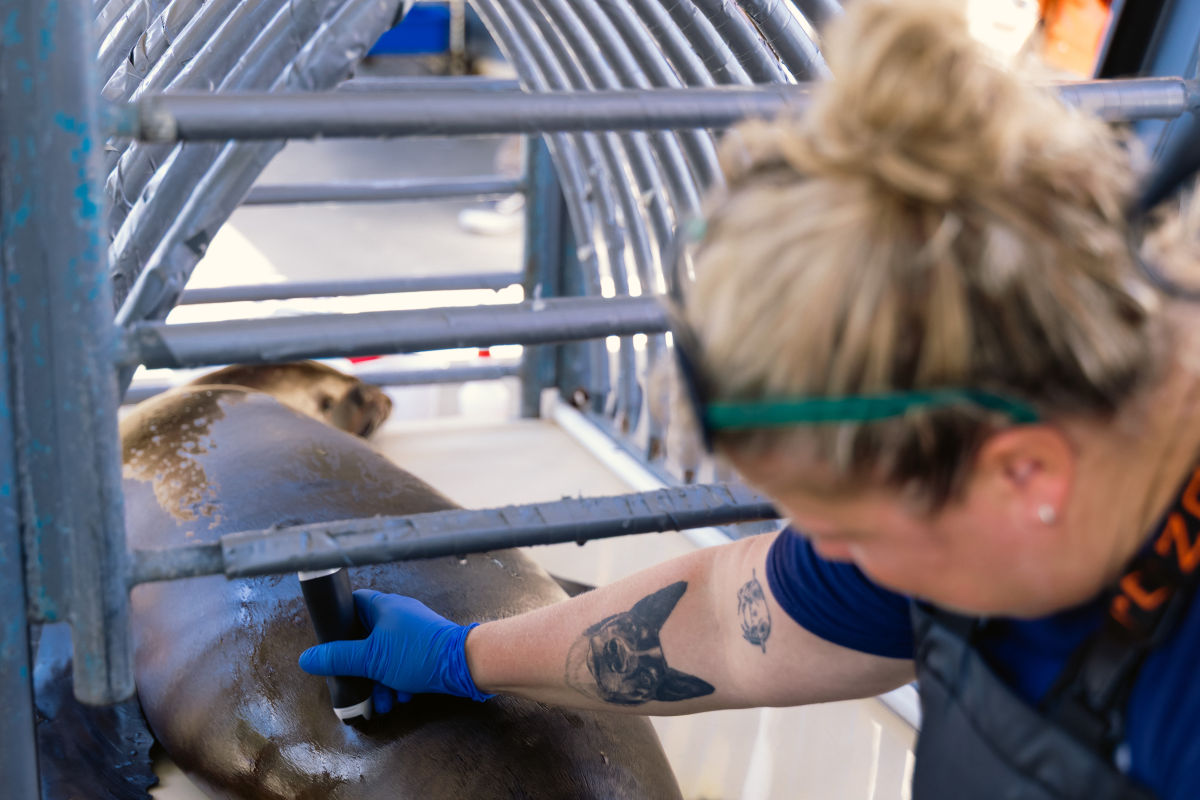
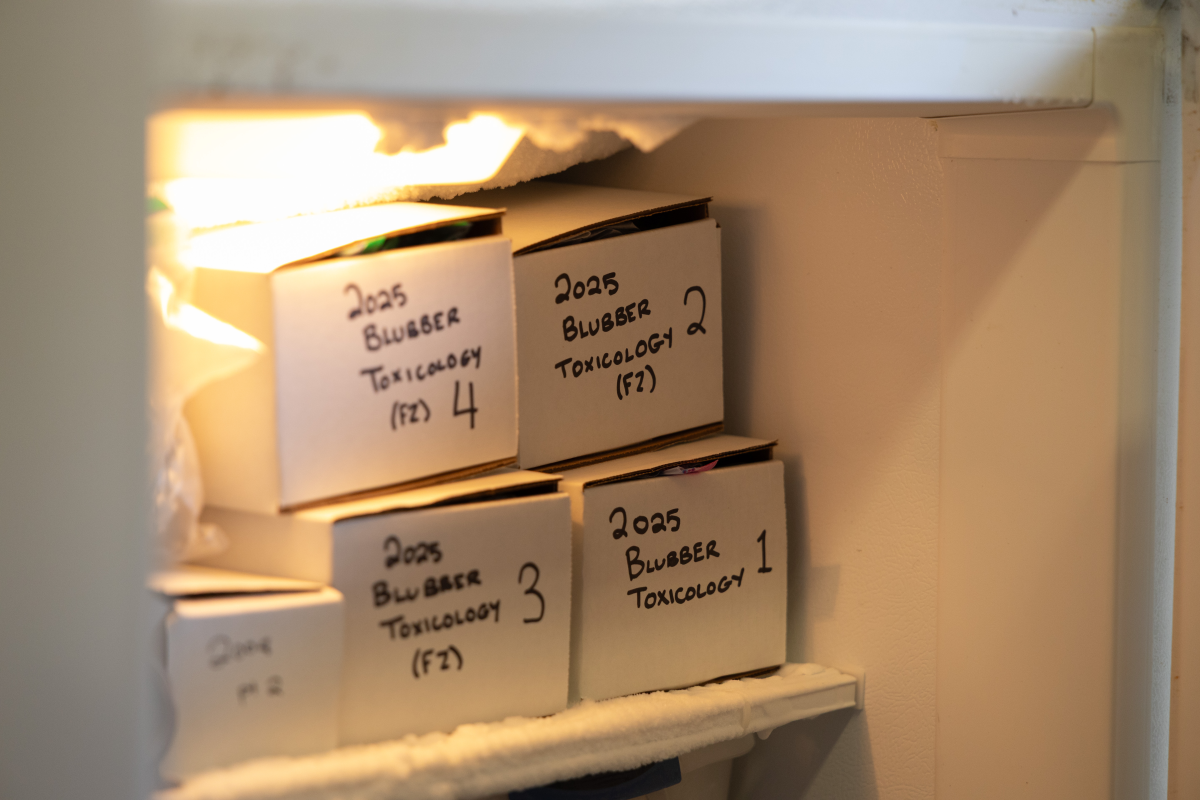
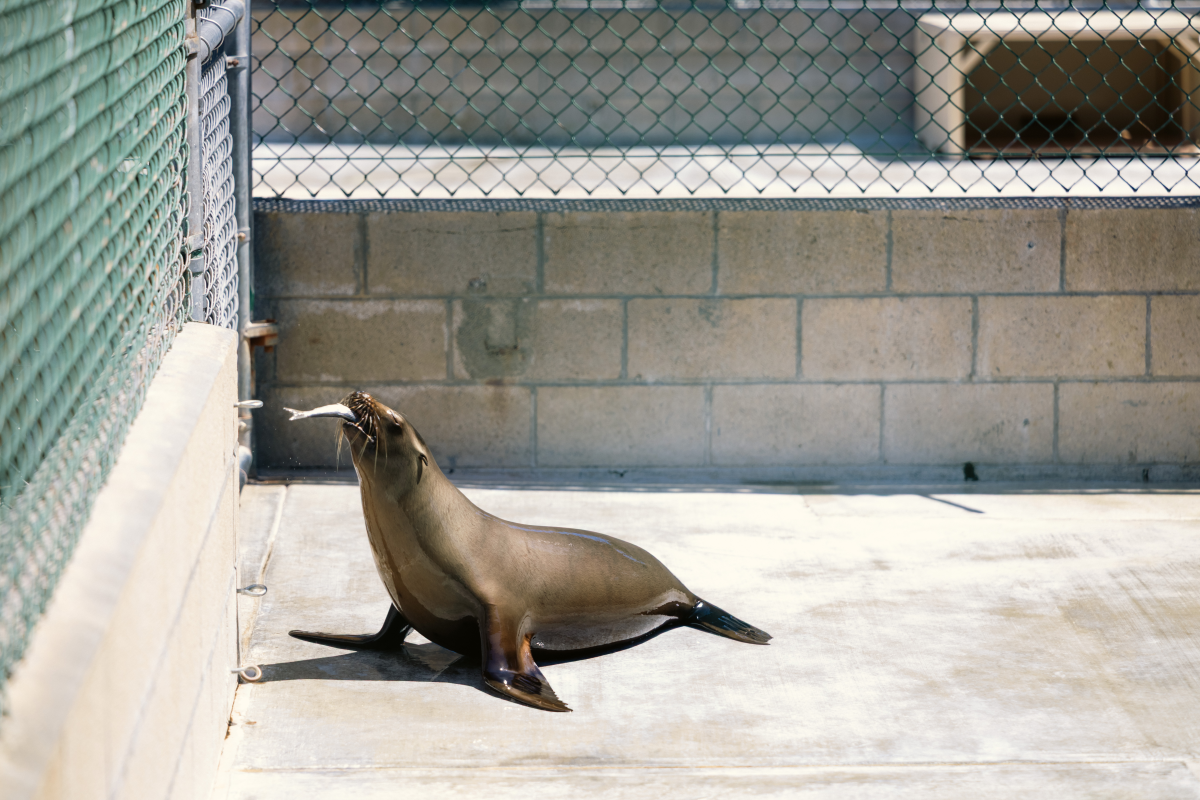
Transcript:
ARI SHAPIRO, HOST:
This is ALL THINGS CONSIDERED from NPR News. I’m Ari Shapiro.
AILSA CHANG, HOST:
And I’m Ailsa Chang, face-to-face with a snoring sea lion.
(SOUNDBITE OF SNORING)
CHANG: Aw, sleepy princess.
This sleeping beauty is Arda (ph). She’s here at LA’s Marine Mammal Care Center, recovering from poisoning caused by one of the longest toxic algal blooms that Southern California has ever seen. They’ve sedated Arda for her final medical exam before she can be released back into the ocean.
MICHELLE RIVARD: All right, so we’ll come and do her ultrasound now.
CHANG: Michelle Rivard is the director of animal health and conservation here.
RIVARD: So that’s her kidney. All of this is intestinal tract. Everything looks normal.
CHANG: So what do you think? Is Arda ready to go back into the…
RIVARD: Yes, Arda looks…
CHANG: …Sea?
RIVARD: …Great. She’s gained about 30 or 40 pounds since she’s been here, and she has a nice, thick blubber layer to give her a good head start before we send her back to the ocean.
CHANG: I love it. She’s all jiggly and happy.
RIVARD: She is.
CHANG: (Laughter).
RIVARD: She’s very jiggly.
CHANG: Arda is one of the almost 400 sea lions and dolphins that the center took in this spring. They were poisoned by what’s called domoic acid. That’s the toxin produced by these algal blooms off the coast here. It can cause seizures and disorientation, and at least 1,500 animals were affected all across Southern California just this year. But now that the worst of the outbreak is over, scientists are releasing the last survivors.
RIVARD: I can also show you – we have a bunch of samples in necropsy as well.
CHANG: Oh, yeah.
And they’re gathering clues from the animals that didn’t make it.
RIVARD: So we’re headed into our necropsy lab. So necropsy is essentially postmortem exam. So this room was very, very busy during the domoic acid bloom…
CHANG: Aw.
RIVARD: …Unfortunately…
CHANG: Look at this…
RIVARD: …Because there were…
CHANG: …Table with all the implements. This is where the dead bodies would be?
RIVARD: This is where – yeah, this is where the dead bodies would be.
CHANG: There are towers of buckets in here, filled with dolphin organs, sea lion fetuses.
Oh, that’s…
RIVARD: You can see a brain.
CHANG: …Very much a brain right there.
RIVARD: Yeah.
CHANG: Is that dolphin brain or…
RIVARD: No.
CHANG: …Sea lion?
RIVARD: This is from a sea lion pup. So this was…
CHANG: I see.
RIVARD: …A pup that was born premature. Unfortunately, with domoic acid, we see a lot of sea lion moms not able to carry their pups to term. So that will be really interesting because we have animals at all different stages of gestation. So we’re able to see…
CHANG: I see.
RIVARD: …Fetuses at different types of their development and hopefully learn from them.
CHANG: Wow.
These samples can help scientists learn more about how the poisoning affected reproduction and whether wildfire runoff had an impact, too.
RIVARD: California sea lions are really wonderful sentinels for ocean health. They’re apex predators. They feed at the same level of the food chain that we do.
CHANG: They’re kind of like our front line.
RIVARD: They are.
CHANG: Yeah.
RIVARD: Yeah. They’re a really, really important sentinel species, and they can tell us all kinds of really, really interesting things about the health of our ocean and the health of our marine ecosystems, as well as human health.
CHANG: And as that scientific detective work takes place, other scientists, like Justin Viezbicke at NOAA, are already looking ahead to the next big event. He coordinates the network of facilities in California that respond to these domoic acid outbreaks.
JUSTIN VIEZBICKE: Most of our facilities have done what they would do in a year in the first three months of this year.
CHANG: I see.
VIEZBICKE: So they’ve basically done all of what they would normally do in a very concentrated time period.
CHANG: So what happens if next year you see another big outbreak? I mean, what would you do differently?
VIEZBICKE: Well, the challenge is that we’ve got thousands of marine mammals off this coastline. And so, you know, I think the things that we would do differently is we would try to respond quicker and more timelier. If they’re alive, how do we potentially get them to our facilities faster and in more numbers? Do we start moving animals up the coast and bringing them others (ph) up there? Do we bring partners from, you know, other places around California or all around the country to come out and help us?
CHANG: In the meantime, Michelle Rivard says she recently got word that the Trump administration is dismantling a NOAA program which monitors the long-term health of sea lion populations in California’s Channel Islands. It’s been running for decades, and Viezbicke says its cancellation is going to leave big gaps for scientists.
VIEZBICKE: We’re not going to have a good read if we get into a situation where we’re having a ton of sea lions dying from domoic acid. What does that mean population-wise? Well, hard to say what the population’s doing if we don’t have a good read on what the pup numbers are every year. And so…
CHANG: Right.
VIEZBICKE: …Both in short term and in long term, it’s going to have some pretty big effects on stranding networks and science and really the understanding of California sea lions and their populations around the West Coast.
(SOUNDBITE OF WAVES CRASHING)
CHANG: Meanwhile, on an empty beach in nearby Portuguese Bend, Michelle Rivard and her team are preparing to release one of her very last patients from this year’s outbreak, a sea lion named Patchouli (ph). She’s in a crate, loaded onto the back of a big truck.
(Laughter) Oh, my goodness.
RIVARD: Yeah.
CHANG: The truck’s bobbing up and down. She’s feisty. She’s ready to…
RIVARD: She’s ready to go.
CHANG: She’s ready (laughter).
RIVARD: Yeah. She’s excited, yeah.
CHANG: They roll the crate down a ramp onto the smooth rocks that meet the ocean waves. And then – open sesame.
Door is lifting – there she goes. Oh, she’s undulating down the rocks.
RIVARD: (Laughter).
CHANG: Oh, she is just…
RIVARD: She’s making her way…
CHANG: …Moving and grooving.
RIVARD: …Across the rocks and…
CHANG: She is.
RIVARD: …Taking off.
CHANG: Aw. Are you kind of, like, sad that she didn’t look over and say goodbye? One last…
RIVARD: No, we’d rather have them not.
CHANG: (Laughter).
RIVARD: We really like the releases where they’re like, we’re out of here, good riddance.
CHANG: It’s a happy ending for Patchouli, but for the scientists like Rivard, it’s only the beginning of the next chapter.
An escalation in Yemen threatens to reignite civil war and widen tensions in the Gulf
Saudi Arabia bombed Yemen's port city of Mukalla, targeting a shipment of weapons from the United Arab Emirates for separatist forces. The UAE later said it would withdraw its forces from Yemen.
Cecilia Giménez, the artist who ‘restored’ the face of Jesus, has died at 94
Giménez international attention after she attempted to restore an old fresco. While it was immediately ridiculed at the time, the piece eventually turned into a tourist attraction.
What being around death taught this hospital chaplain about life
J.S. Park helps patients and their families cope with death every day as a hospital chaplain. He explains what to expect as a person is dying, and how to reckon with uncomfortable feelings about death.
Israel says it will bar aid groups, including Doctors Without Borders, from Gaza
Israel accused Doctors Without Borders, one of the largest health organizations operating in Gaza, of failing to clarify the roles of some staff that Israel accused of cooperation with militants.
China flexes blockade capabilities near Taiwan on second day of military drills
China's People's Liberation Army is staging a second day of large-scale military drills around Taiwan. It's unleashing live-fire exercises as part of what it calls "Justice Mission 2025."
Policy relief for family caregivers seems stalled out. But there are signs of change
Family members carry the burden and costs of caring for America's aging population. Federal policy change is slow to come but a new movement and state actions are building momentum.



